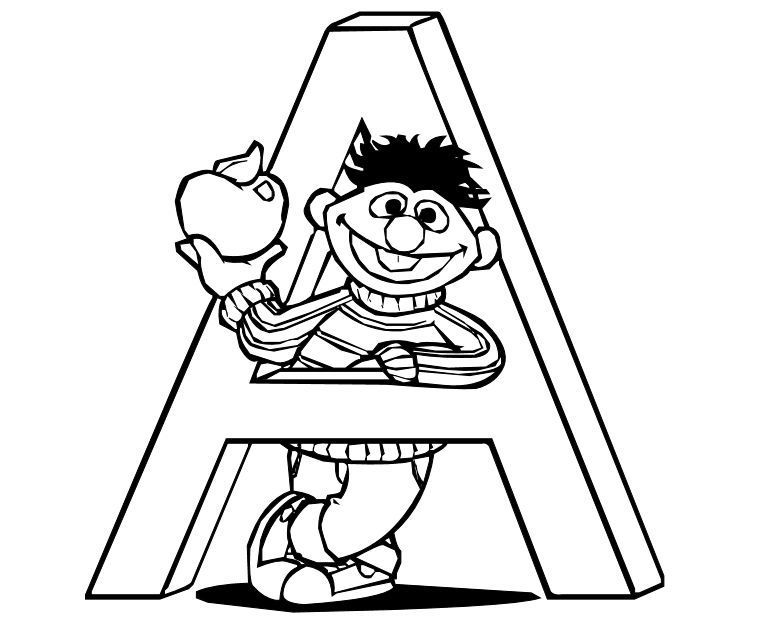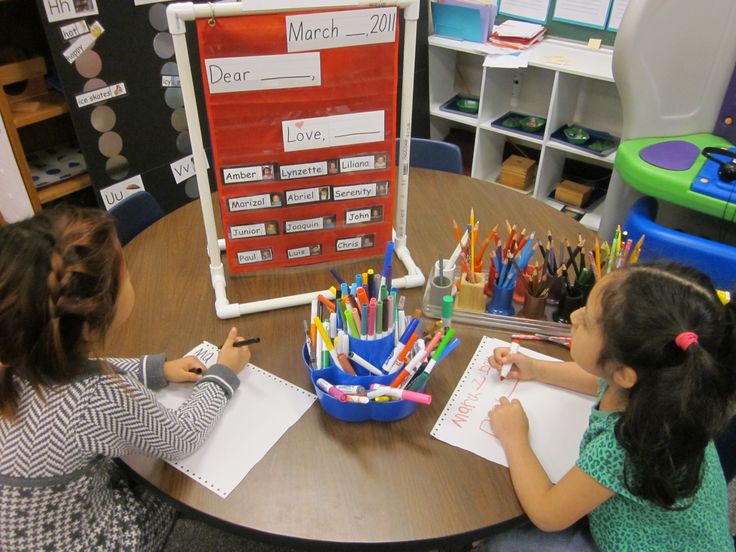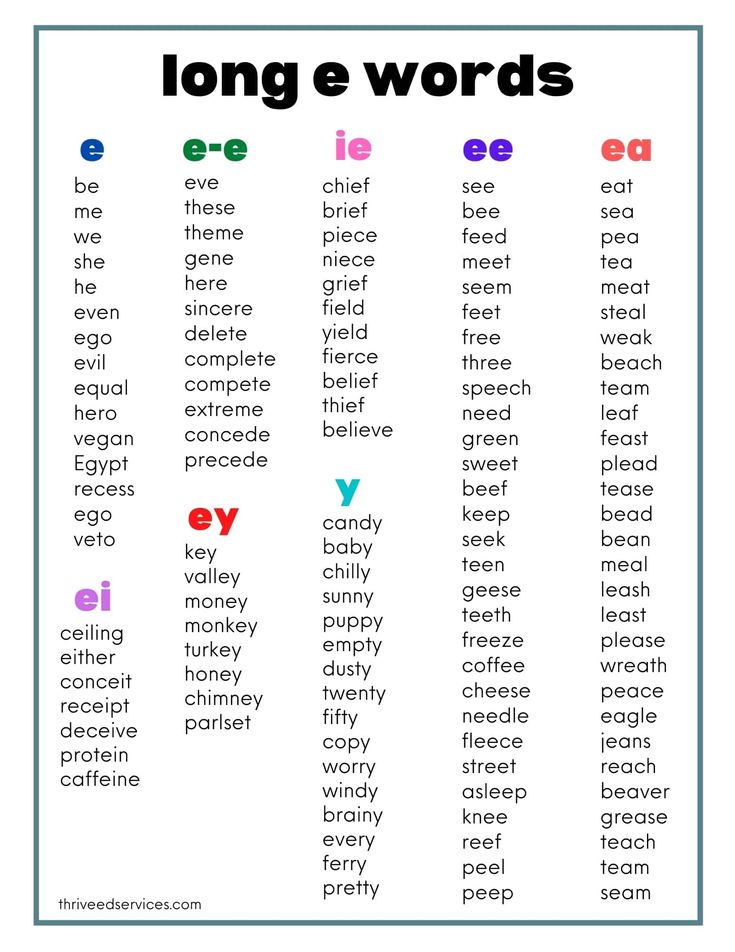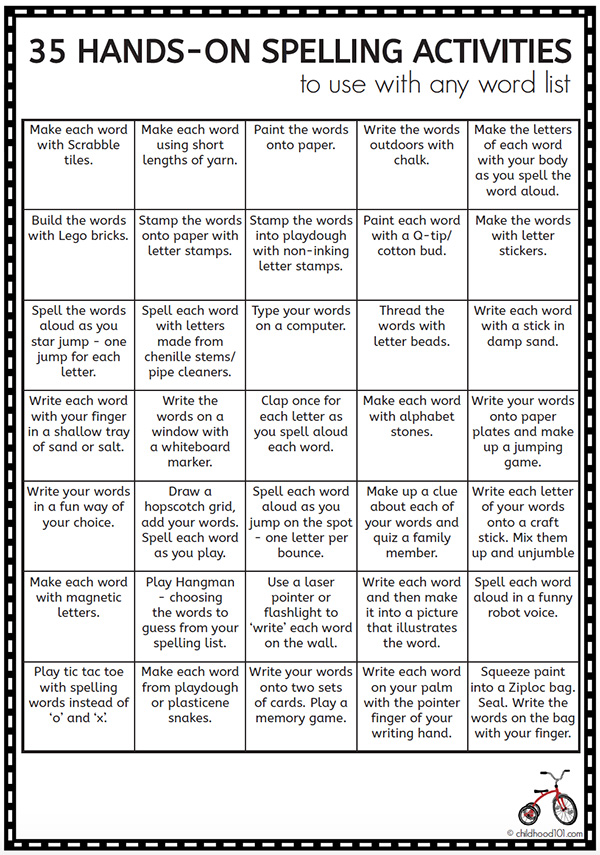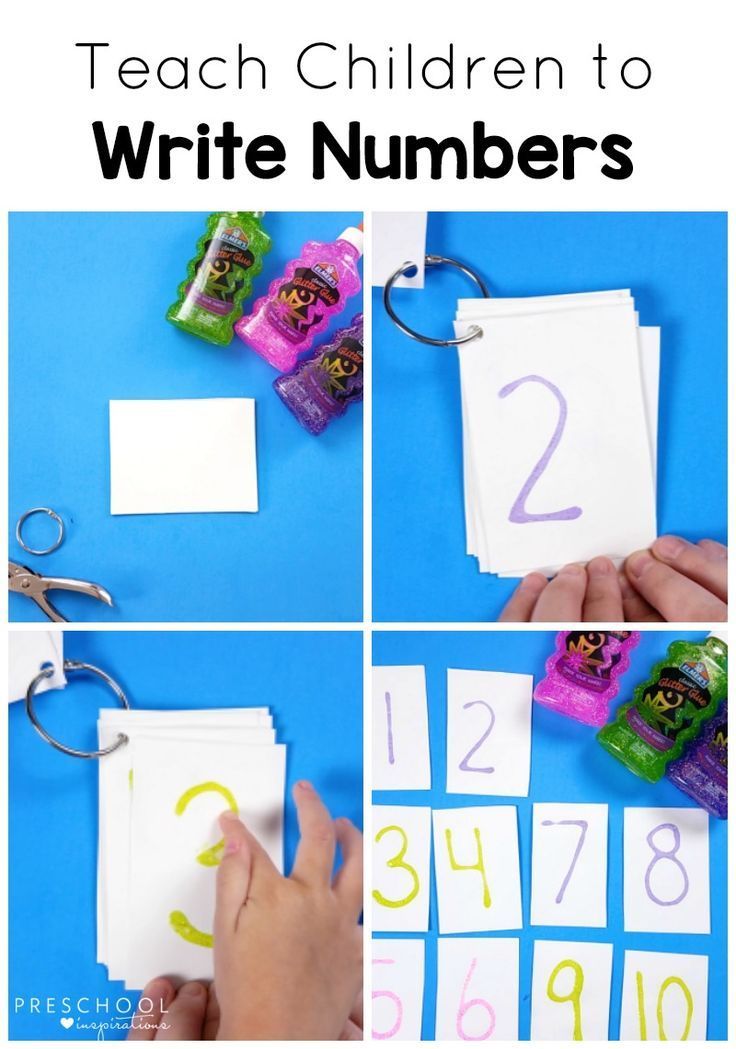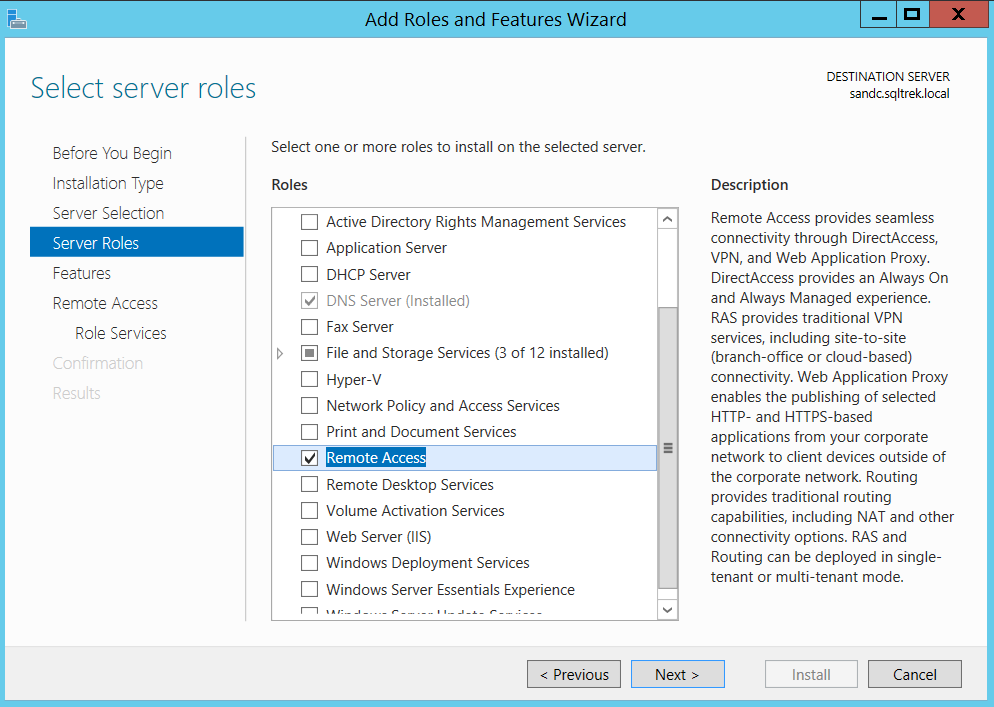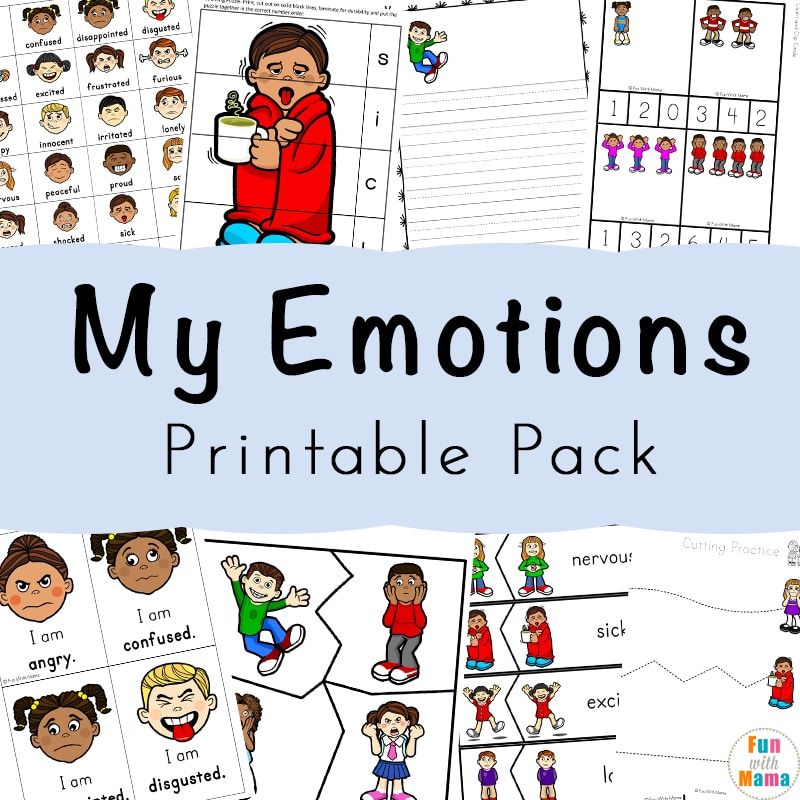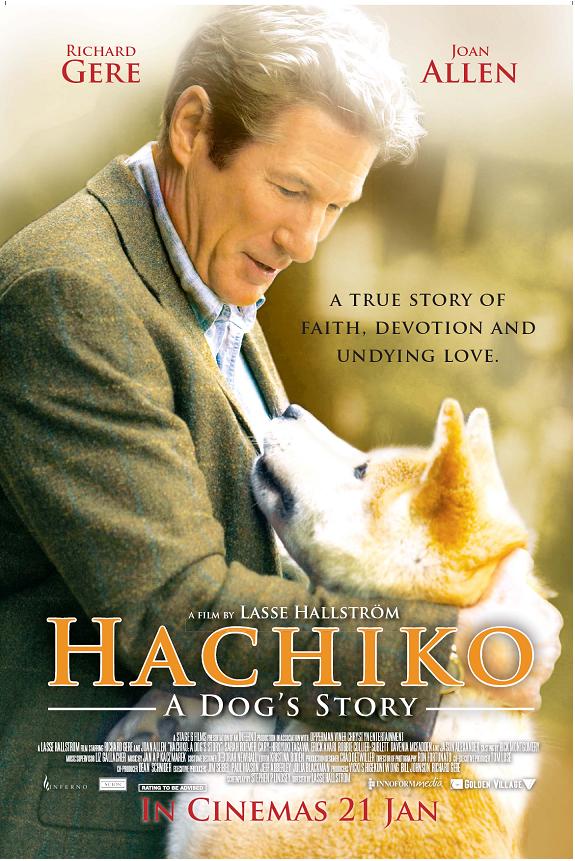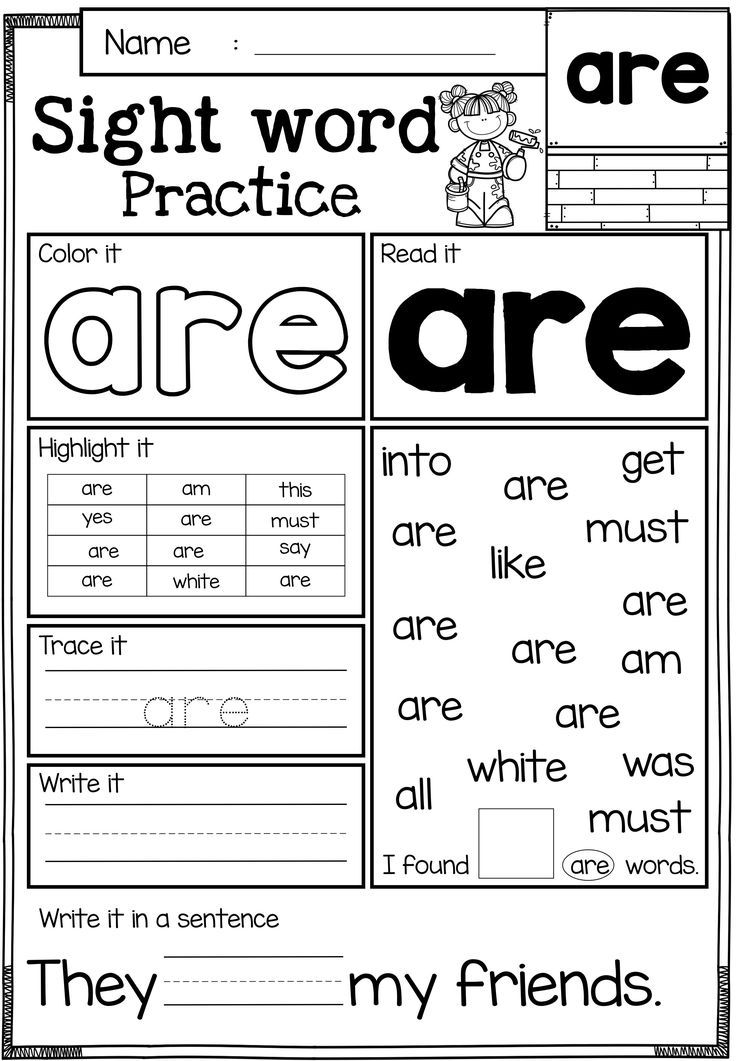Activities for adjective
11 Classroom Games for Teaching Kids About Adjectives
Traditional language teaching often focuses on repetition and rote learning, but children want to learn through experience and engagement. Discover how you can make learning fun with these exciting and easy adjective-based language games.
1. Introduce yourself
A good game to play at the start of the school year, the teacher can go first and then ask students to do the same. Standing at the front of the classroom, students introduce themselves to the class by describing qualities about themselves – for example, “I’m curious, cheerful and tall.”
2. Adjective match
Create a deck of cards with different adjectives written on each card. You’ll also need some images (pictures from magazines, travel brochures etc) that can be described by adjectives. Now here’s how the game works:
- Each player chooses an image.
- Deal four cards to each player.
- If the player can describe the image with all four cards they win.
If not, then discard a card and choose a new card from the pile.
- Play continues until a winner is found.
3. Noun showdown
Divide the class into two or more teams, then write a noun on the board or show it as an image. Teams have a minute to write down as many adjectives as they can. Teams get a point for every adjective that is appropriate. A fast, fun game that students love!
4. Show and tell
Students bring objects from home and describe them front of the class. The teacher takes notes of all of the different adjectives the student uses to describe the object. These can be displayed around the classroom later or the teacher can quiz the class on what adjectives were used after each presentation.
5. Describing the day
Like show and tell, have students come to the front of the class and use adjectives to describe their day so far. Lead them with prompts like:
- Describe your morning so far.
- Describe what you had for lunch.
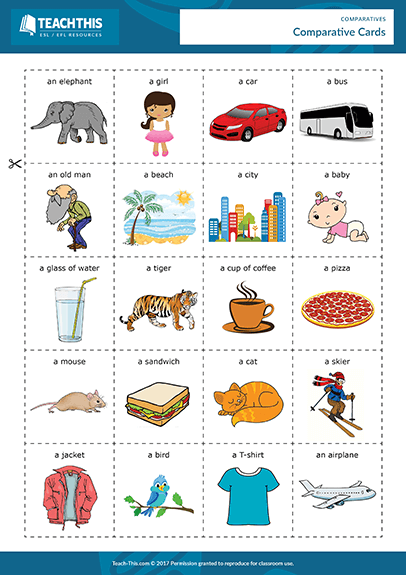
- Tell us about your maths class.
Try to guide students into giving descriptive opinions. Afterwards, quiz the class on aspects of the tale. “What adjectives did Rachel use to describe maths class?” etc.
6. Riddle game using adjectives
This is a fun game that tests student’s creativity and understanding using adjectives. Have students come up with ‘Who am I?’ riddles using adjectives to describe animals, people, vehicles and other nouns. Have them read the riddles out to the class (or in small groups) and see who can solve the riddle.
7. Circling the adjectives on favourite stories
There are a few ways to do this fun game that can be played in a group or during quiet time. Teachers can print out samples from student’s favourite stories or write them on the board. Encourage students to read through the story, circling adjectives as they go. The best thing about this exercise is its versatility, easily slipping into any lesson plan.
8.
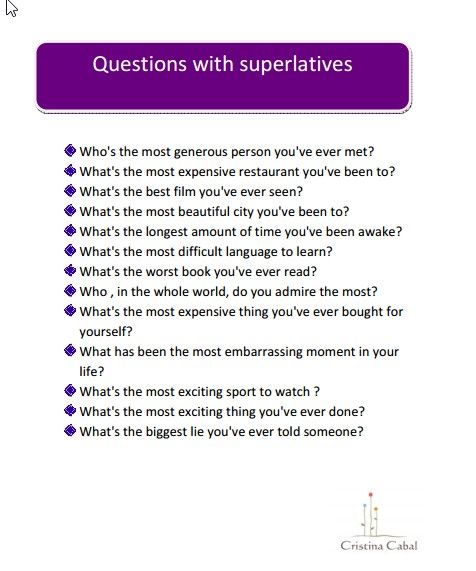 Lucky dip
Lucky dipThe teacher places different objects in a bag. Students are invited to come up and feel one of the objects, describing what it feels like. The rest of the class tries to guess what the object is based on the adjectives used.
9. Fishing for adjectives
This game requires a bit of prep, but is hours of fun and can be reused for other word groups like nouns and verbs. You’ll need a deck of flashcards, some magnets and a fishing rod. Here’s how to play:
- Write a noun, adjective or verb on each card. The words need to be clearly readable from a short distance.
- Attach paper clips to each card.
- Attach another magnetic clip to a children’s fishing rod.
- Scatter cards face up on the floor.
Encourage students to ‘fish’ the adjectives from the pile, with students taking turns controlling the rod. They’ll need to distinguish between the adjectives and non-adjectives before they can fish one out. Once they correctly fish out an adjective, you could also ask them to name an object that could be described using that word.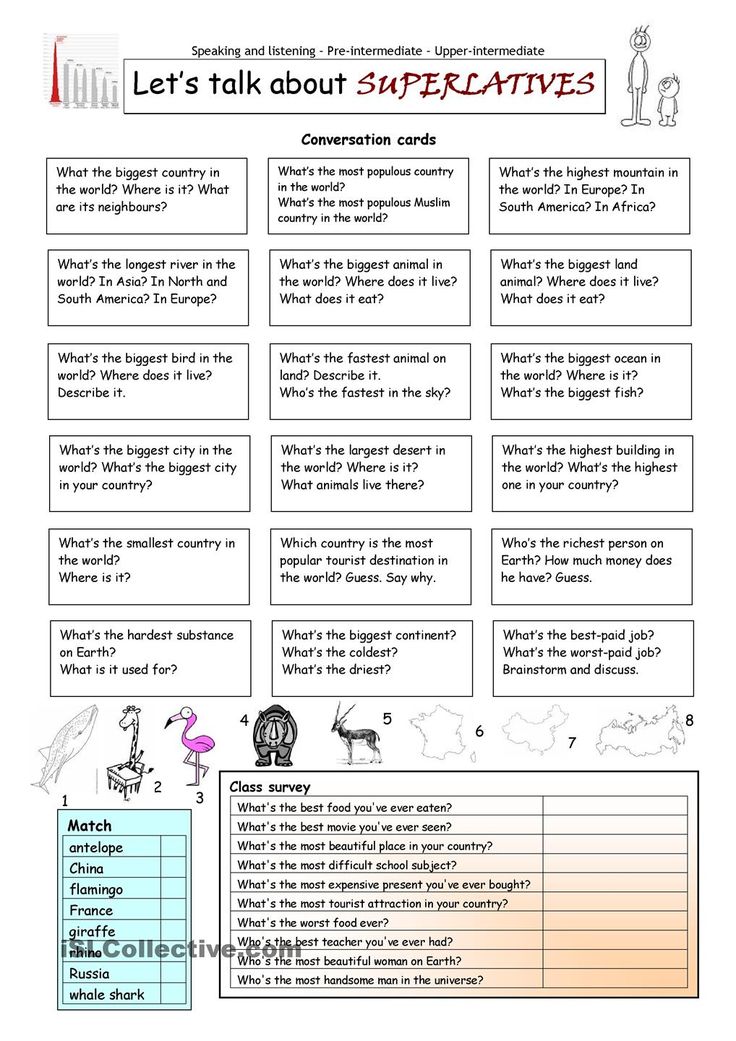
10. Describing your partner
Pair students up and ask them to describe each other. This can be a great exercise and also a great activity for teaching children positive social interactions, focusing on positive aspects of their classmates and developing empathy and sensitivity to one another.
11. Describing people
From a magazine collection, ask students to use adjectives in describing the various people on the pages. Try to vary the magazines and subjects. You can also move away from people to things (cars, boats etc).
Keeping students engaged
Educational games are effective because often students don’t even realise they’re learning while playing. Many are also versatile and can be tweaked or repurposed to use for other subject areas. Through games like these you can create a fun learning environment for your students that’ll help them pick up the difference between adjectives and other kinds of words in no time.
10 Fun Activities to Teach Adjectives
Aren't adjectives just so much fun! They are one of the most important parts of speech that you can teach.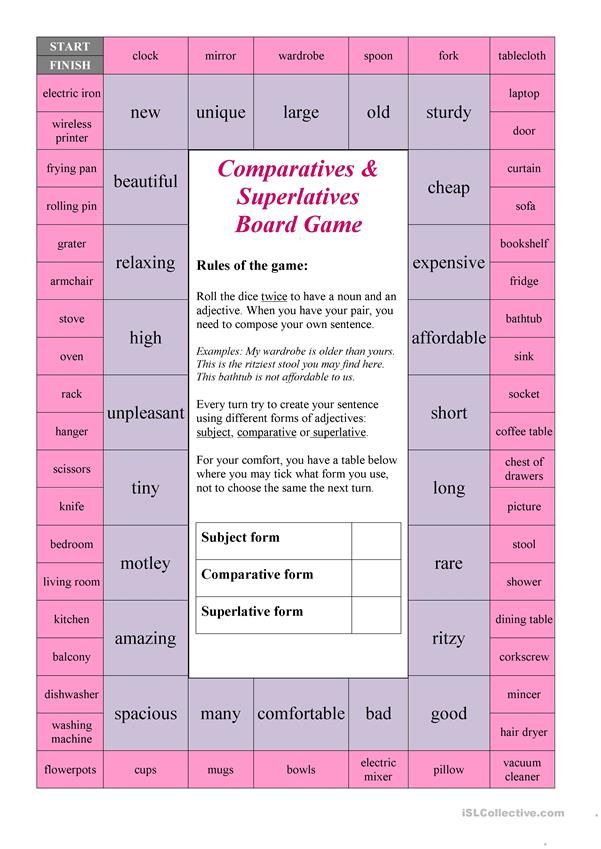 Why? Because adjectives make writing more meaningful, vivid and interesting. Adjectives are the key to getting students to become accomplished, creative writers. Let me give you an example. Here is a sentence without adjectives:
Why? Because adjectives make writing more meaningful, vivid and interesting. Adjectives are the key to getting students to become accomplished, creative writers. Let me give you an example. Here is a sentence without adjectives:
The bird is in the tree.
And here is a sentence with adjectives:
The baby bird is in the lush, green tree.
See the difference? The second sentence helps you to create a clearer image in your mind and visualize the text more effectively. I've put together a list of engaging ways that you can teach adjectives in your classroom.
10 Fun Activities for Teaching Adjectives
Teaching adjectives does not have to be boring (or full of worksheets). Here are 10 fun ways that you can teach adjectives in your classroom. Many of the activities are free and super simple to set up.
1. What's in the Box?
The best thing about this activity is that it is fun and free! Simply gather some things laying around at home or in the classroom such as an apple, pencil, glue stick, bottle etc.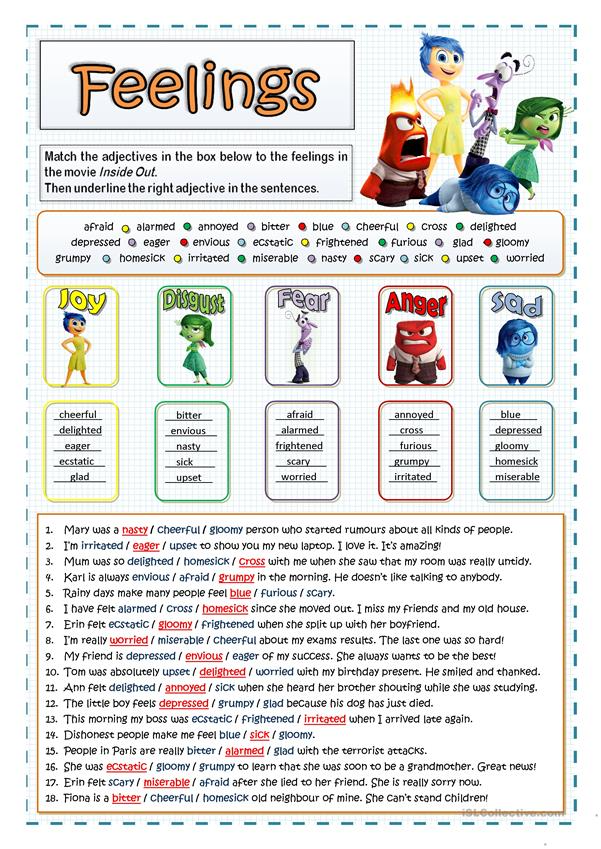 Then, place one of the objects inside a box or bag and choose a student to take a peek. That student describes what is in the box to the rest of the class using adjectives. The remaining students try to guess what the hidden object is by listening to the clues. For example, to describe an apple, students might say that it is round, it is red, it is crunchy, it is sweet.
Then, place one of the objects inside a box or bag and choose a student to take a peek. That student describes what is in the box to the rest of the class using adjectives. The remaining students try to guess what the hidden object is by listening to the clues. For example, to describe an apple, students might say that it is round, it is red, it is crunchy, it is sweet.
2. Guess the Animal
This activity is so much fun! It is very similar to celebrity heads where the student tries to guess what animal they are by asking questions. However, the adjectives twist is that the student must use an adjective in each question. For example, Am I green? Do I have four legs? Can I run quickly? Am I dangerous? Can I swim fast? Am I fluffy? Do I have soft skin? Do I have a spotty body? And so on. I made the headbands from some card stapled together at the ends. Super easy and so much fun! You can find the pictures in my TPT store here.
3.
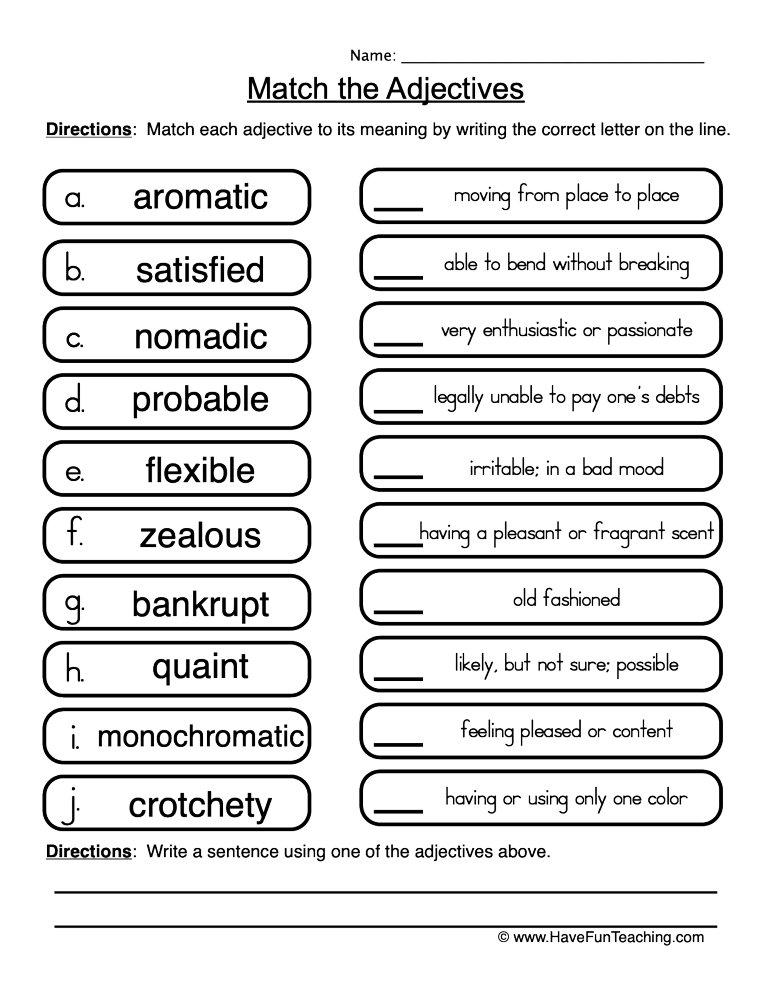 Find an Adjective
Find an AdjectiveWant to incorporate adjectives into your guided reading groups/literacy centers? This is a great way to provide students with practice in identifying adjectives. As a bonus, this activity also gives them the opportunity to examine how authors use adjectives in their writing. To complete the activity, students flick through their guided reading books and locate all of the adjectives that they can find. Have them note them down in their workbooks or on a mini whiteboard. As an extension, have students find a sentence without an adjective and get them to rewrite it with adjectives.
4. Describe It
It is so important to get students thinking about how to describe objects. Using adjectives in writing is great, but they must be relevant too! This 'Describe It' activity has students thinking about the best suited adjectives for each of the nouns. To play, students choose a picture card and then select 4 relevant adjectives to describe it.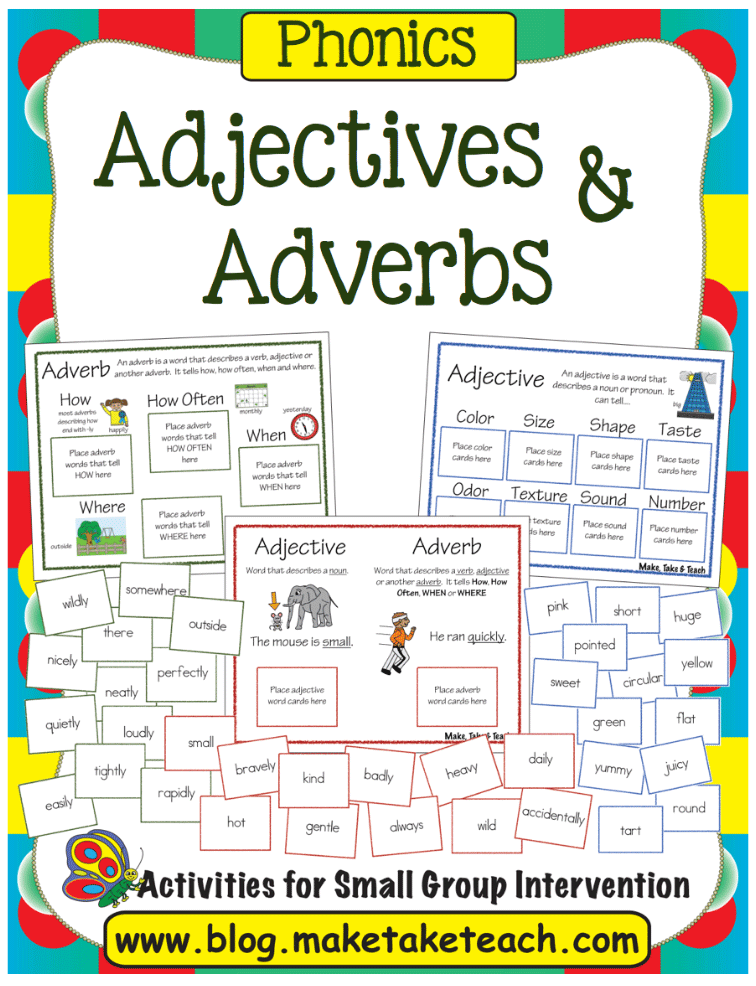 Then, they write a sentence in their workbooks using one or more of the adjectives. You might like to change it up sometimes too by having students choose the silliest adjectives to describe the pictures. This helps to highlight how some adjectives just do not go with words. Plus, it will have them in giggles too! You can grab this activity here.
Then, they write a sentence in their workbooks using one or more of the adjectives. You might like to change it up sometimes too by having students choose the silliest adjectives to describe the pictures. This helps to highlight how some adjectives just do not go with words. Plus, it will have them in giggles too! You can grab this activity here.
5. Pick a Noun
I know that 'noun' is in the title but I promise this is totally an adjectives activity. It is a great warm-up and is perfect for getting students thinking about how adjectives can describe certain objects. To play, choose an adjective such as 'long' and have students brainstorm all the different things that can be described by this word. For example, snake, pencil, ruler, hair, dress, bananas, worm, rake.
6. Edit a Sentence
Once students begin using adjectives in their writing, you might be find that they keep using the SAME adjectives ALL THE TIME.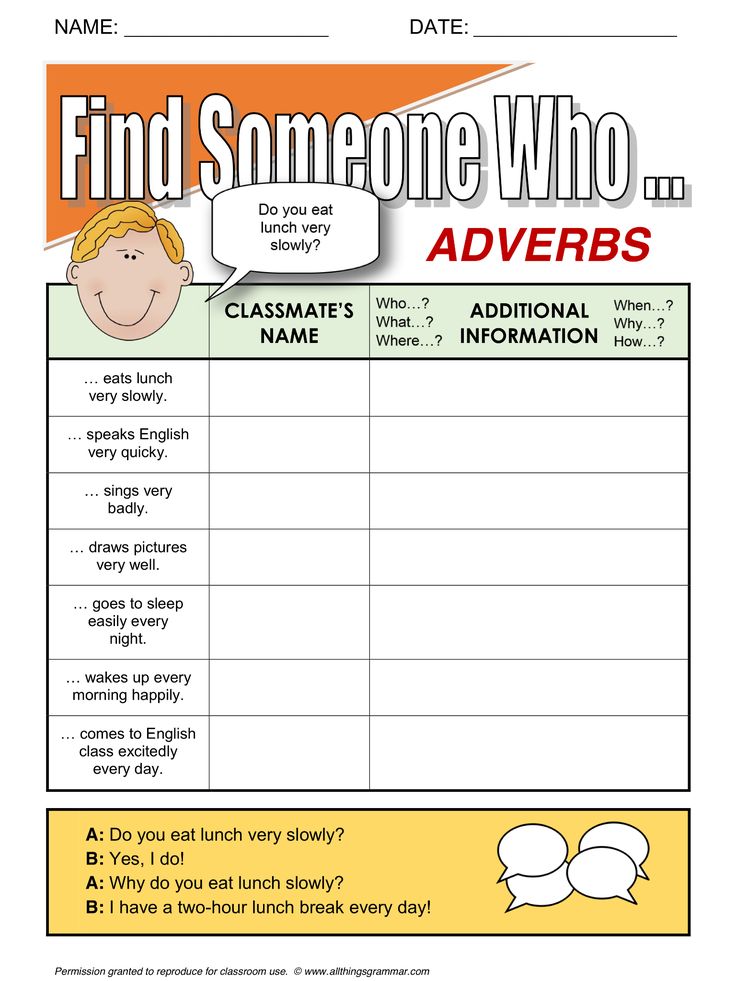 'There was a nice girl who lived in a castle. It was a nice day and she met a nice prince and they had a nice day together.' Yep, bet you've all experienced this and are cringing right now. This is where the 'Edit a Sentence' activity comes in. Students read the sentence and rewrite it by swapping the adjective/word with another from the table. I love this activity so much because it expands their adjective vocabulary and shows them how multiple words can be used to describe a certain noun. R.I.P nice. Glad to see you go.
'There was a nice girl who lived in a castle. It was a nice day and she met a nice prince and they had a nice day together.' Yep, bet you've all experienced this and are cringing right now. This is where the 'Edit a Sentence' activity comes in. Students read the sentence and rewrite it by swapping the adjective/word with another from the table. I love this activity so much because it expands their adjective vocabulary and shows them how multiple words can be used to describe a certain noun. R.I.P nice. Glad to see you go.
7. Draw a...
This is a fun one! Get students to design a new animal, monster or robot and then have them list some adjectives to describe it. If you want to link this activity with another learning area, it pairs super well with creative arts. The above 'Rabbicafish' was completed as a part of the lesson 'Critters from Alien Earth' which you can check out for free here.
8. Alphabet Adjectives
This activity will get students thinking! Have students write out the alphabet and choose an adjective for each letter.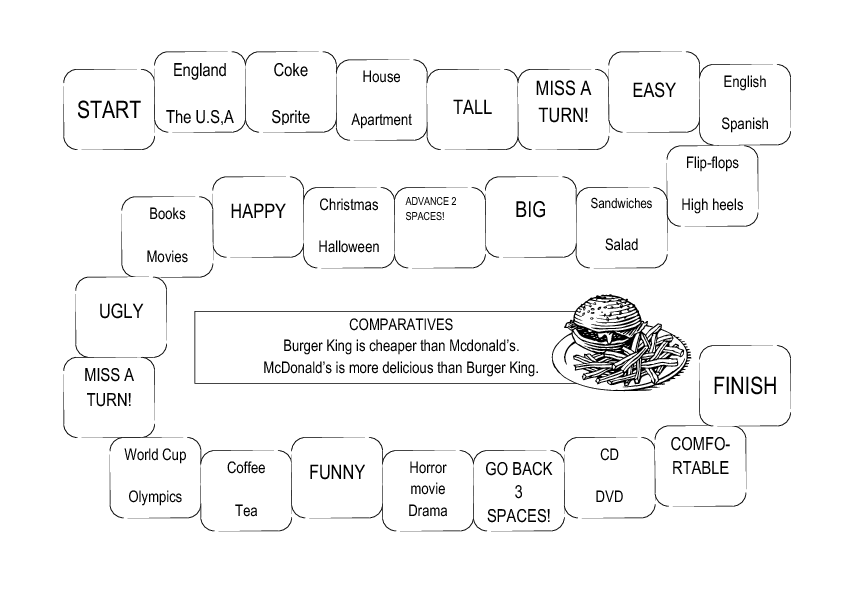 Here are a few to get your students started. A = awesome, amazing. B = beautiful, big, bouncy, brown. C = cold, clear, cute. D = dry, dirty, deep, dangerous. E = elegant, easy, excited. I love this one because it requires minimal resources and can be extended by having students use a few of the adjectives in sentences. It is also a great fast finisher idea and can be repeated with both nouns and verbs.
Here are a few to get your students started. A = awesome, amazing. B = beautiful, big, bouncy, brown. C = cold, clear, cute. D = dry, dirty, deep, dangerous. E = elegant, easy, excited. I love this one because it requires minimal resources and can be extended by having students use a few of the adjectives in sentences. It is also a great fast finisher idea and can be repeated with both nouns and verbs.
9. Opposites
Here's another great warm up activity. Call out an adjective and have students call out (or write down) its opposite. Check out the table below for some ideas:
10. Adjective Sort
Adjective Sort should have been number one on this list of activities but here we are. Before the rest of the activities on this list can be completed, students must be able to distinguish adjectives from other words. If students are still mixing adjectives up with nouns and verbs then they won't be able to complete any of adjective activities successfully or incorporate them into their writing effectively.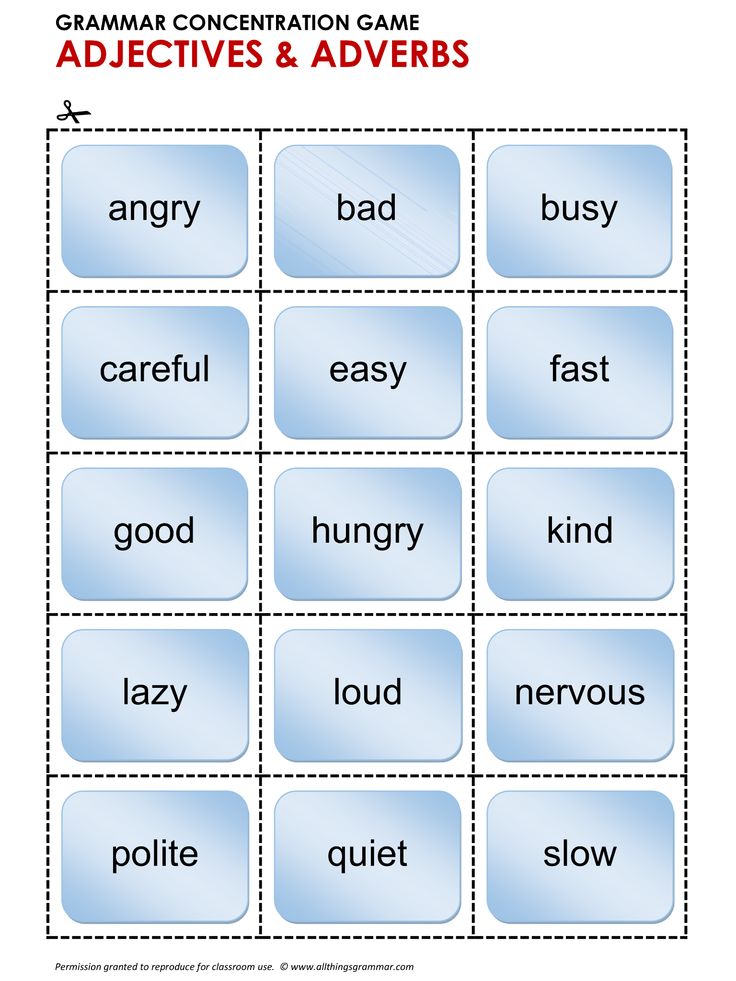 This adjective sorting game is a straightforward way for students to distinguish adjectives from other words. They read the word, decide whether it is an adjective or not and then write it in the matching column. You can check this activity out here.
This adjective sorting game is a straightforward way for students to distinguish adjectives from other words. They read the word, decide whether it is an adjective or not and then write it in the matching column. You can check this activity out here.
What fun ways do you use to teach adjectives? Comment below, I'd love to know.
If you'd like to check out the resources in this post, you can find them here:
Adjectives Literacy Centers
Edit a Sentence Activity
| An adjective is a part of speech that denotes a sign of an object and answers the question what? what? For example: red red, good good, interesting interesting, Russian Russian. Adjectives in English do not change either by gender, or by number, or by case: a young man a young man, a young woman young, woman, young people young people, with a young man with a young man. Adjectives are simple and derivative. Simple adjectives have neither prefixes nor suffixes in their composition: big is big, short is short, black is black, red is red. Derived adjectives include suffixes or prefixes, or both at the same time: natural, incorrect, incorrect, unnatural. The most characteristic adjective suffixes are: -ful: useful, doubtful nine0010 -less: helpless helpless, useless useless; -ous: famous, dangerous; -al: formal formal, central central; -able, -ible: eatable The most common adjective prefixes are: un-: unhappy unhappy, unequal unequal; in-: incomplete incomplete, indifferent indifferent. nine0010 Some adjectives are compound and are formed from two words denoting one concept: dark-blue is dark blue, snow-white is snow-white. In a sentence, adjectives are used in the function of definition and in the function of the nominal part of the compound predicate: The large box is on the table. (definition) The box is large. The box is big. nine0010 (nominal part of compound predicate)
Some adjectives in English, as well as in Russian, can act as nouns. With a plural meaning, denoting all persons or a group of persons with this feature, they do not take the ending -s and are used with the definite article:
Adjectives denoting a nationality can be turned into nouns denoting persons of that nationality. Adjectives ending in -an, -ian (Russian Russian, German German, etc.), turning into nouns, are used both in the singular and in the plural. In the plural they take the ending -s:
In the plural, such nouns can denote a given nation as a whole.
Adjectives ending in -se and -ss (Chinese Chinese, Swiss Swiss, etc.) become nouns, both singular and plural. In the plural, they do not take the ending -s. They can also refer to the given nation as a whole. In this case, they are preceded by the definite article:
Adjectives ending in -sh and -ch (English English, French French, etc.
The adjective in the function of definition comes before the noun to which it refers, and in the function of the nominal part of the compound predicate - after the linking verb: I have bought a red pencil. The pencil is red. The pencil is red. When a noun is defined by two or more adjectives, those that are more closely related in meaning to the noun are placed closer to it:
Some adjectives ending in -able, -ible can either precede or follow the noun:
The adjective enough can come before or after a noun:
Some researchers, including British ones, believe that there are no nouns in the role of definition, but there are adjectives formed from nouns: they believe that, for example, the word 'kitchen' - « kitchen " can be an adjective with the meaning " kitchen ". Other grammarians still call such cases the use of nouns in the function of definition. In the English language there is a tradition according to which the sequence (order of arrangement) of definitions (adjectives) before the noun being defined is determined. Between the noun determiner (article or pronoun) and the noun itself, the defining words line up in the following sequence: nine0045 1. opinion (opinion), 2. size (size), 3. quality / characterization of the state (quality / character), 4. age (age), 5. 6. color (colour), 7. origin (country) (origin), 8. material (material), 9. purpose (for what) (purpose), Of course, it should be understood that more than three definitions of a noun in speech are used extremely rarely, and if it is necessary to use them, several subordinate clauses are used - this way information is perceived much easier. nine0282 | | | | | | |||||||||||||||||||||||||||||||||||
| | | | | | | | | | ||||||||||||||||||||||||||||||||
| | | | | | ||||||||||||||||||||||||||||||||||||
| | | | | |||||||||||||||||||||||||||||||||||||
| | | | | |||||||||||||||||||||||||||||||||||||
| | | | | | | |||||||||||||||||||||||||||||||||||
0281 and ': political and economic ties – political and economic relations .
Also ‘ and ’ is always placed between the color names: black and white – black and white .
If two definitions (adjectives) describe opposite features of the same object, then the unions ‘ but ’, ‘ yet ’ or ‘ though ’ are used: a yet simple effective means - simple but effective , nice but expensive products - good but expensive goods , a tasty though expensive menu - tasty but expensive menu .
| COMPARATIVE DEGREES OF ADJECTIVES AND ADVERBS |
Qualitative adjectives and adverbs of mode of action in English, as well as in Russian, have three degrees of comparison: positive, comparative and superlative. One-syllable adjectives and adverbs, as well as two-syllable adjectives ending in -y, -e, -er, -ow, form a comparative degree by adding the suffix -er to the positive degree, and a superlative degree using the suffix -est.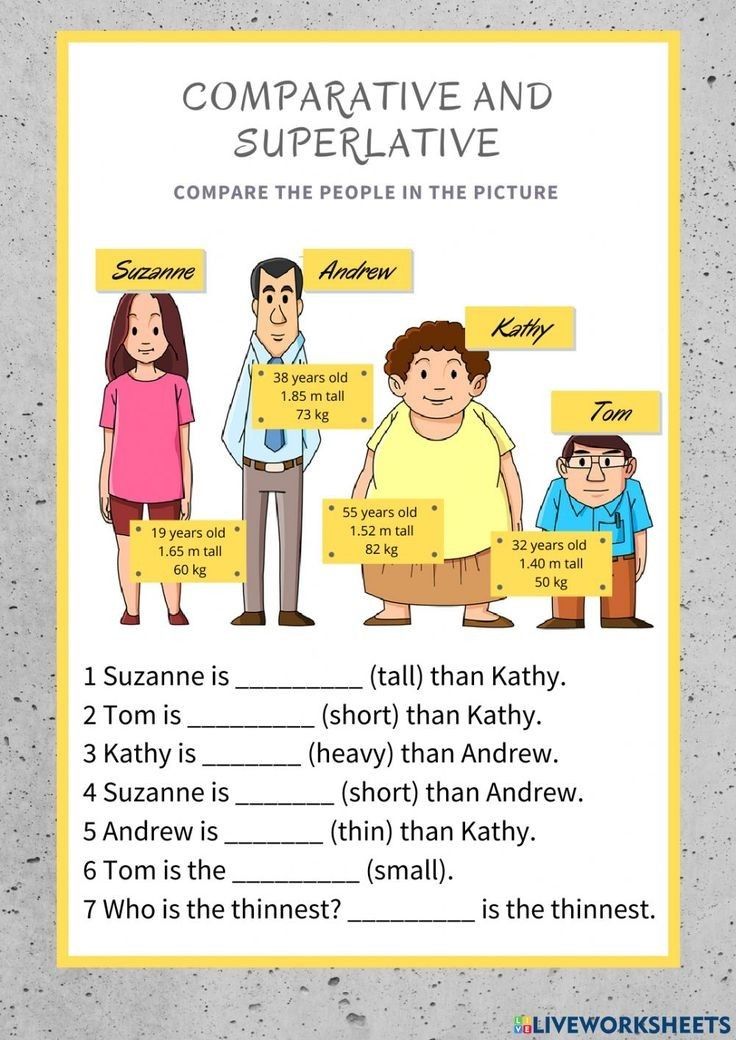 nine0010
nine0010
| FORMATION OF COMPARATIVE DEGREES USING SUFFIXES | ||
| Positive degree | Comparative degree | Superlatives |
| small | smaller | smallest |
| easy easy | easier | easiest |
| EDUCATIONAL SPELLING CHANGES COMPARATIVE DEGREES WITH THE SUFFIXES -ER AND -EST | ||
| No. | RULE | EXAMPLE |
| 1 | If an adjective or adverb in a positive degree ends in an unreadable letter -e, then adding -er and -est this letter is omitted | large large - larger more — largest |
| 2 | If an adjective or adverb ends in a consonant letter preceded by a short stressed sound, the final consonant is doubled | hot hot — hotter - hottest hottest |
| 3 | If an adjective or adverb ends in -y preceded by a consonant, the comparative and superlative degrees of -y change to -i- | busy - busier busier - busiest |
| 4 | If -y is preceded by a vowel, then -y remains unchanged | gray gray - grayer - grayest |
Polysyllabic adjectives and adverbs, as well as most disyllabic adjectives (except those ending in -y, -e, -er, -ow) form the comparative degree with the word more more, and the superlative degree with the word most most, most, which are placed before an adjective or adverb in the form of a positive degree.
| FORMATION OF COMPARATIVE DEGREES USING MORE AND MOST | ||
| Positive | Comparative | Excellent grade |
| interesting | more interesting more interesting | most interesting most interesting |
| easily | more easily | most easily |
| active active | more active more active | most active most active |
In addition, there are a number of adjectives and adverbs that form degrees of comparison from other roots.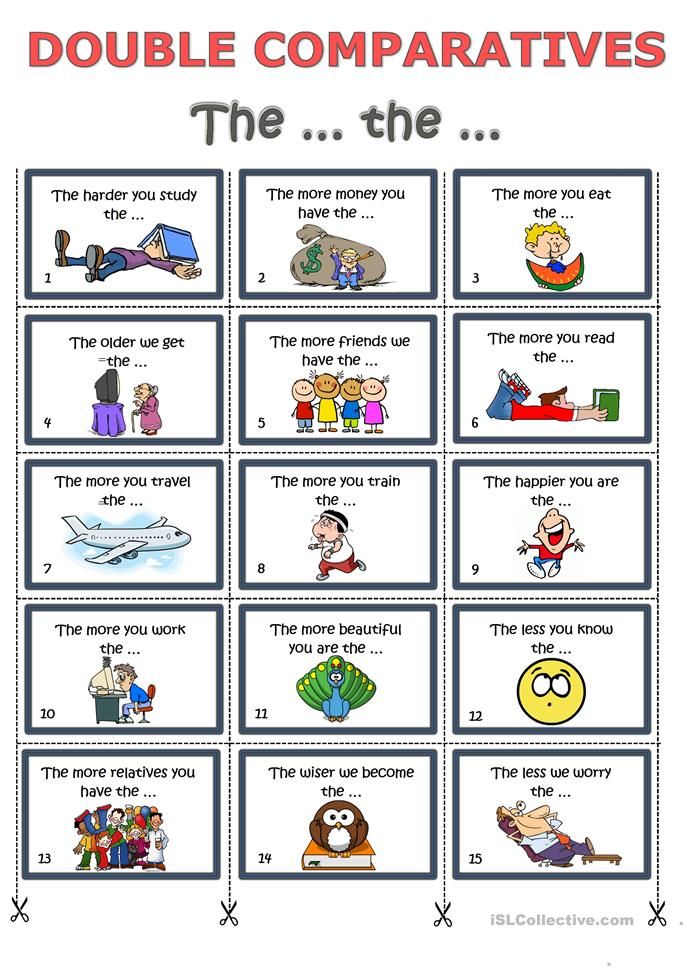
| EXCEPTIONS | ||
| POSITIVE DEGREE | COMPARATIVE DEGREE | EXCELLENT DEGREE |
| good good well | better | best, best |
| bad bad badly* badly | worse | worst worst |
| little little | less less than | least, least |
| many much | more | most largest, most |
| far far away nine0005 | farther further (by distance), further | farthest (by distance), furthest (by time) |
* The remaining adverbs ending in -ly form degrees of comparison using the words more and most, for example: correctly correctly - more correctly more correctly - most correctly most correctly.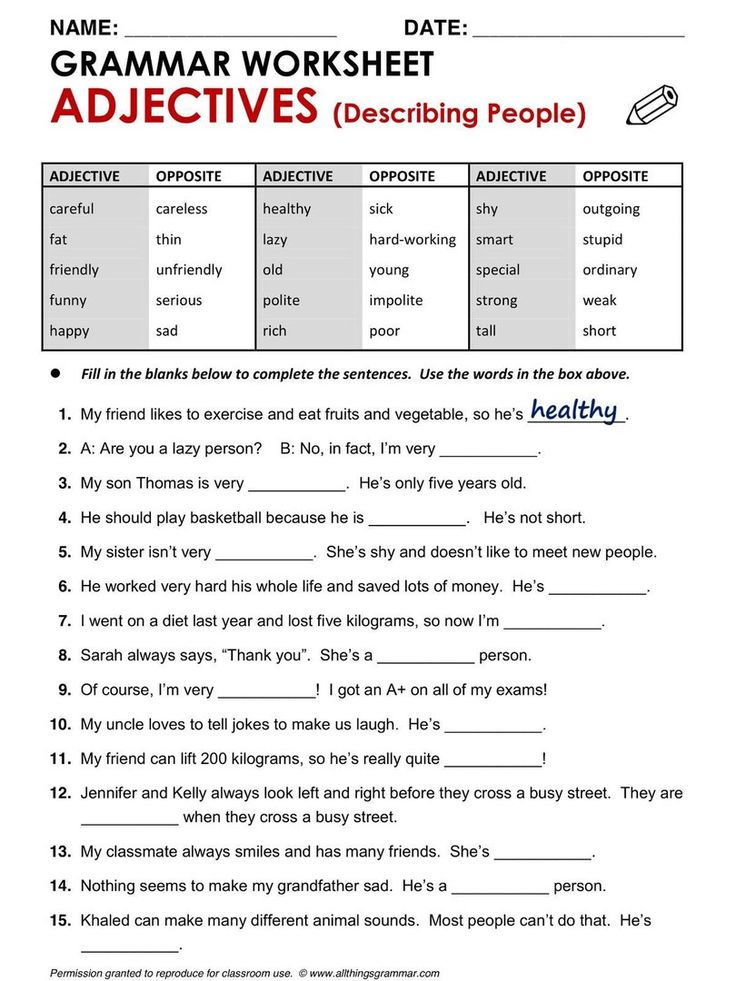
| NOTES | ||
| No. | NOTE | EXAMPLE |
| 1 | A noun with a superlative adjective is used with a definite article if no pronoun is required by the meaning | Moscow is the largest city in our country. Moscow is the largest city in our country. My best friend lives in Saransk. My best friend lives in Saransk. nine0010 |
| 2 | The definite article is retained before the superlative even when the noun is not mentioned (i. | The Moscow underground is the most beautiful in the world. The Moscow metro is the most beautiful in the world. |
| 3 | When comparing two objects of unequal quality, the conjunction than than is always used, which follows an adjective or adverb in a comparative degree (in Russian it can be omitted) | My son is younger than yours. My son is younger than yours (=than yours). |
| 4 | When comparing equal qualities of two objects, the pair union as… as is the same… as… The adjective or adverb is in the positive degree | He is as old as my grandfather. He is the same age as my grandfather. (= He is as old as my grandfather. |
| 5 | When negating the equality of the qualities of two objects, the pair union not so ... as is used not the same ... as ... The adjective or adverb is in a positive degree | Your house is not so big as ours. Your house is not as big as ours. |
| 6 | Most (of) followed by a noun is translated as most | Most students speak English well. Most of the students speak English well. nine0010 |
| 7 | An English sentence, the two parts of which (separated by a comma) begin with an adjective or an adverb in a comparative degree with a definite article in front of it, is translated into Russian using the union than . | The more we read, the more we know. The more we read, the more we know. |
|
SHOW / HIDE RELATED LINKS |
Procedure.
-
Find out what nouns related.
-
According to the gender of the noun I will determine the gender adjective.
-
Remember the ending of an adjective in this kind.
-
Compare the ending of the adjective and end of question.
Changing adjectives by numbers shown to students in comparison combinations of the same noun with the same adjective in singular.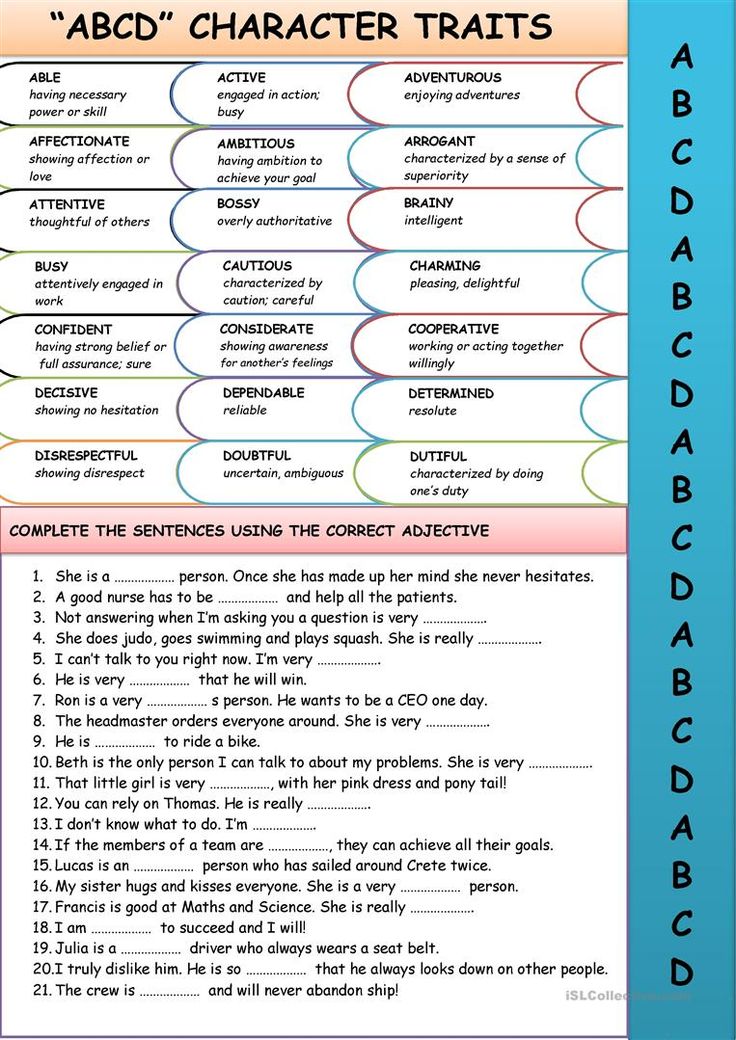 and plural: clear day - clear days. For show take nouns of different gender, and adjectives as with a solid, and with a soft base (Ex. 506, p. 189). AT as a result of the analysis of various examples students are led to the conclusion that all plural adjectives including identical endings: -s or -s .
and plural: clear day - clear days. For show take nouns of different gender, and adjectives as with a solid, and with a soft base (Ex. 506, p. 189). AT as a result of the analysis of various examples students are led to the conclusion that all plural adjectives including identical endings: -s or -s .
endings pl. numbers are memorized by children, it is concluded that adjectives pl. number by birth do not change. Skill correct letter endings pl. numbers adjectives are formed in the process exercises.
Stage 4 . (Grade 4).
-
Improving knowledge of the name adjective as a part of speech: lexical adjective meaning, change by gender, numbers and cases, dependence adjective from a noun. nine0010
-
Developing the ability to use adjectives in oral and written speech.
-
Formation of spelling skill case endings of adjectives in units and many others.
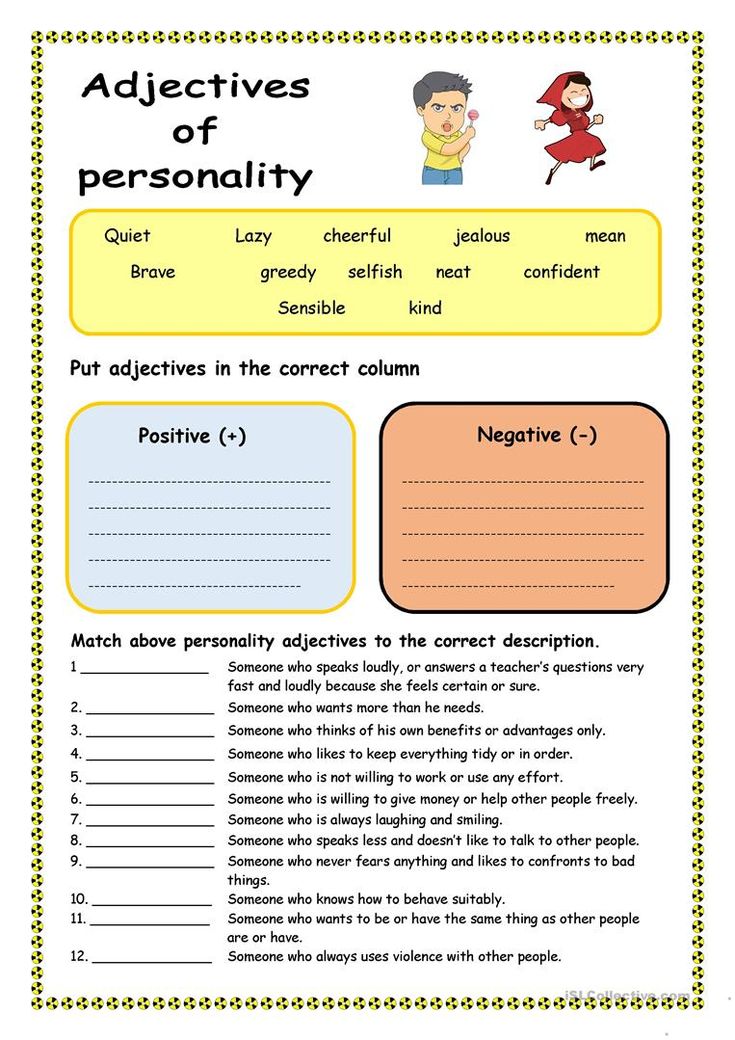 number. improvement spelling skills of generic endings.
number. improvement spelling skills of generic endings.
New is the declension of adjectives and spelling of case endings.
Students should learn how to decline names adjectives with nouns and make it clear that adjectives masculine and neuter in all cases units numbers (with the exception of I. and V. cases) have the same endings and that plural case endings the same for all adjectives regardless of the gender of the noun. Adjective case, same as gender and number, determined by case the noun with which it is associated. Children must learn to identify case adjective in the case of the noun. nine0010
Introduction to changing adjectives cases can be carried out on examples, where one noun is given in different cases.
For example, was young behind the school garden . came from the garden fragrance of flowers. The straight path went garden. Schoolchildren raised their own garden. They looked after garden . Every student cared about the garden.
Schoolchildren raised their own garden. They looked after garden . Every student cared about the garden.
The text is written in advance on the board, and before italicized nouns leaving room for insertion adjectives.
Consistently in every sentence the case of the noun is set, inserted in the appropriate form adjective "young". Then the students write out noun combinations with an adjective.
I.p. young garden
R.p. young garden
D.p. young garden etc.
It is concluded that adjectives change in cases (decline), which in the sentence, the adjective is in the same case as the noun, with to which it is related in meaning and that so the case of the adjective is recognized according to the case of the noun.
Learning the declension of adjectives should start with adjectives shock ending.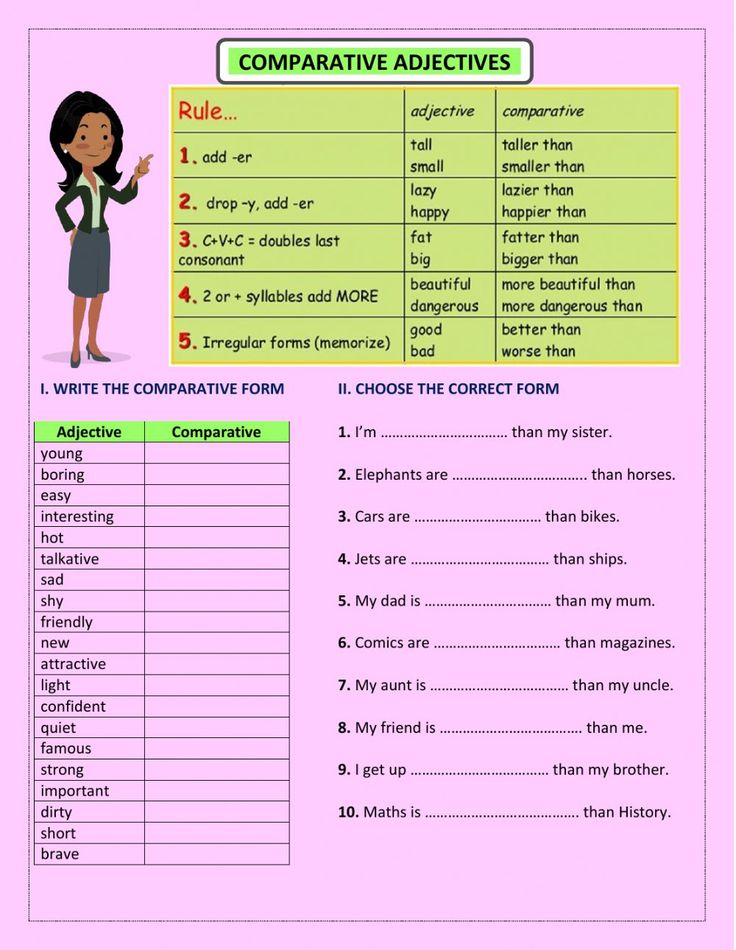
The main method of determining case forms of the adjective is preliminary determination of the case the noun they are associated with within the meaning of. Study of declension of names adjectives are best to start with consideration of the table "Declination masculine and neuter adjectives kind of unit number" (p. 126, T.G. Ramzaeva - nineteen96). Children compare endings adjectives and establish in which cases, these endings are the same, and in what different.
Declension of feminine adjectives studied in general. Spelling case endings are worked out according to cases, feminine adjectives treated separately from adjectives masculine and neuter.
When studying the declension of adjectives in the plural it is advisable to combine similar or close in their endings case forms, namely:
a) jointly study I.p. and similar to it V.p.
b) R.p. etc. having the same endings th, - th .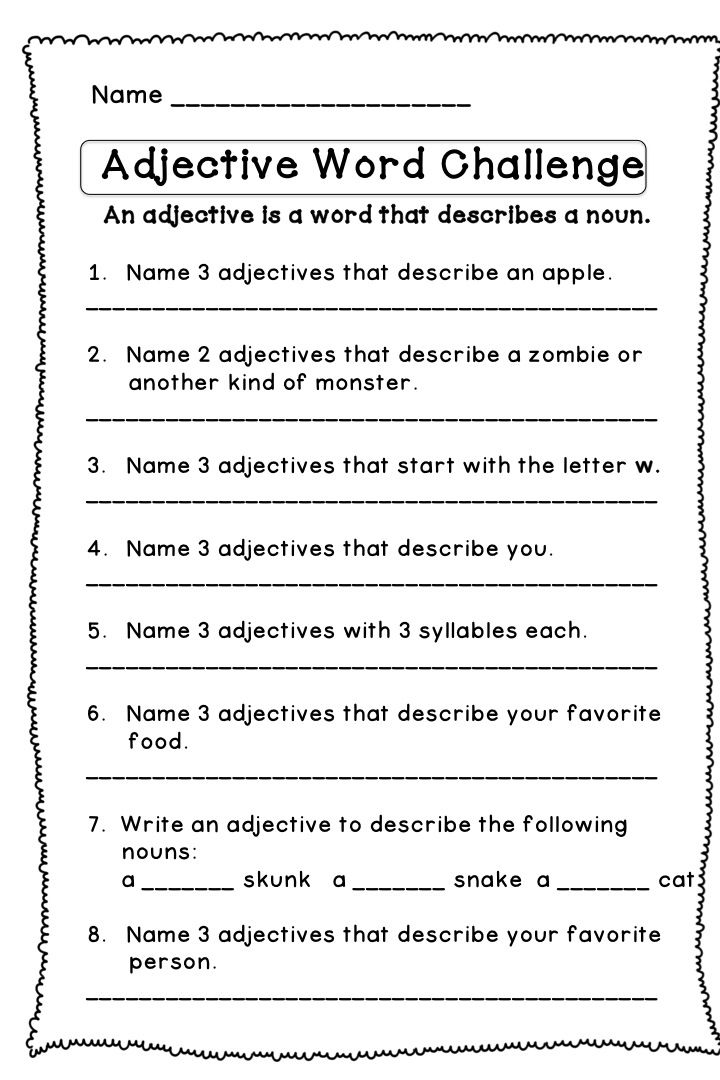
c) D.p. etc., the endings of which are close -th, -im ;
-s, -s .
The greatest difficulty for children spelling genitive endings, instrumental and prepositional cases masculine and neuter adjectives gender, accusative and instrumental cases feminine adjectives. nine0010
Correct spelling of unstressed adjective endings helps matching method practiced at school adjectives with stressed and unstressed endings: old forest - young, a huge bird - big.
Often helps and reception of substitution question with adjective endings:
which house? - new
what fabric? - red ,
because the end of this question the pronoun is always stressed. nine0010
When studying the genitive case spelling and pronunciation are compared.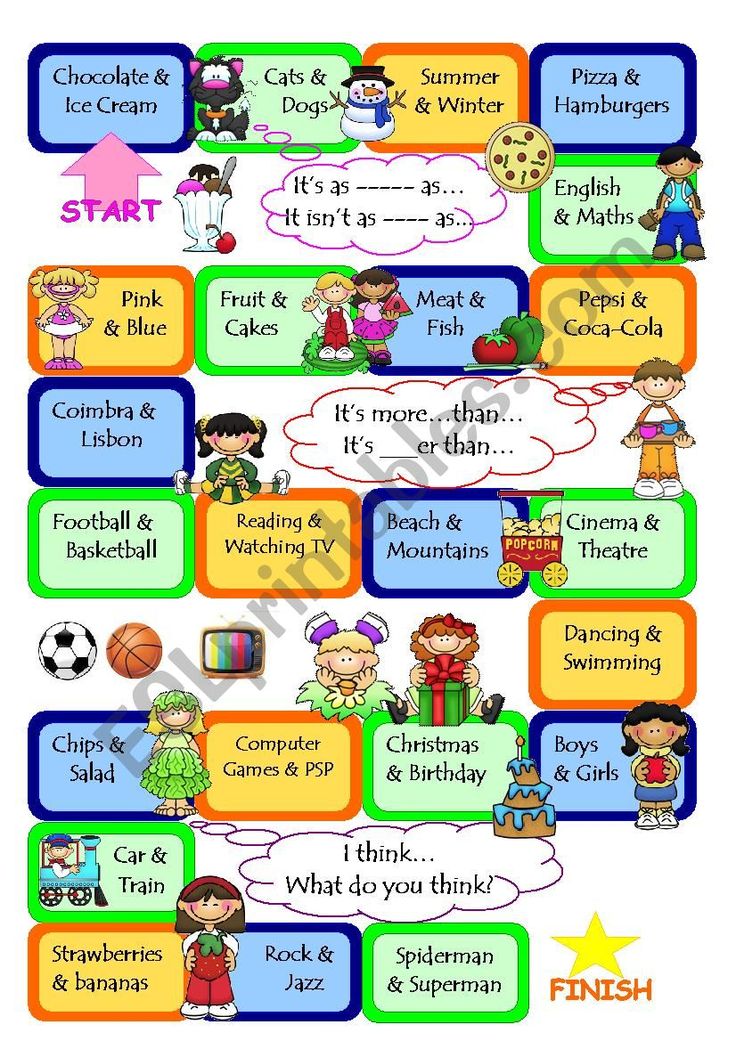

 They can only change in degrees of comparison: long, longer, longest long, longer, longest. nine0010
They can only change in degrees of comparison: long, longer, longest long, longer, longest. nine0010 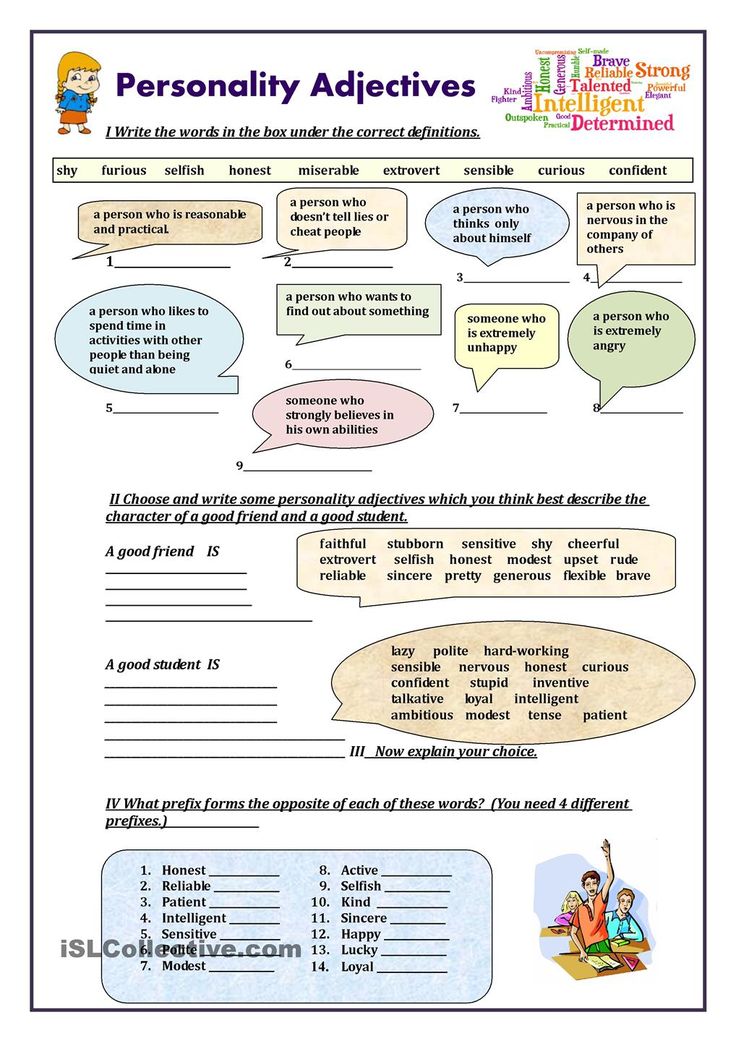 Big box on the table.
Big box on the table. 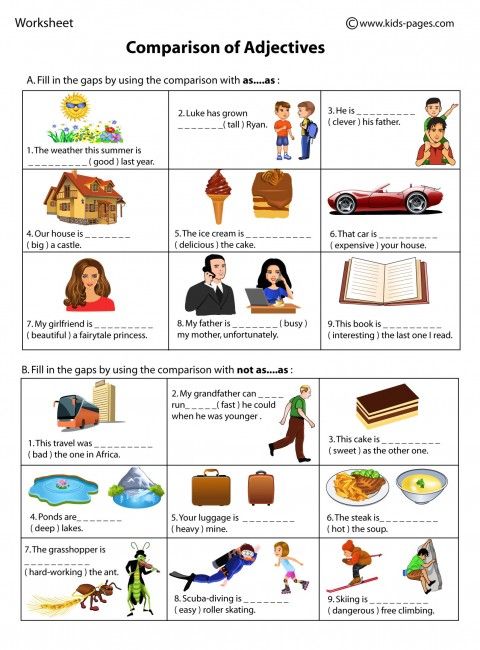 B.
B. 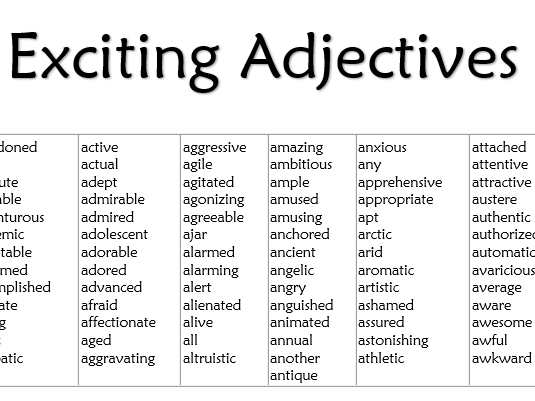 In this case, they are preceded by the definite article:
In this case, they are preceded by the definite article:  ) become nouns and are used in the plural to refer to the nation as a whole. In this case, they are preceded by a definite article: the French are French, the English are English, the Scotch are Scots, the Dutch are Dutch, the Spanish are Spaniards. nine0010
) become nouns and are used in the plural to refer to the nation as a whole. In this case, they are preceded by a definite article: the French are French, the English are English, the Scotch are Scots, the Dutch are Dutch, the Spanish are Spaniards. nine0010 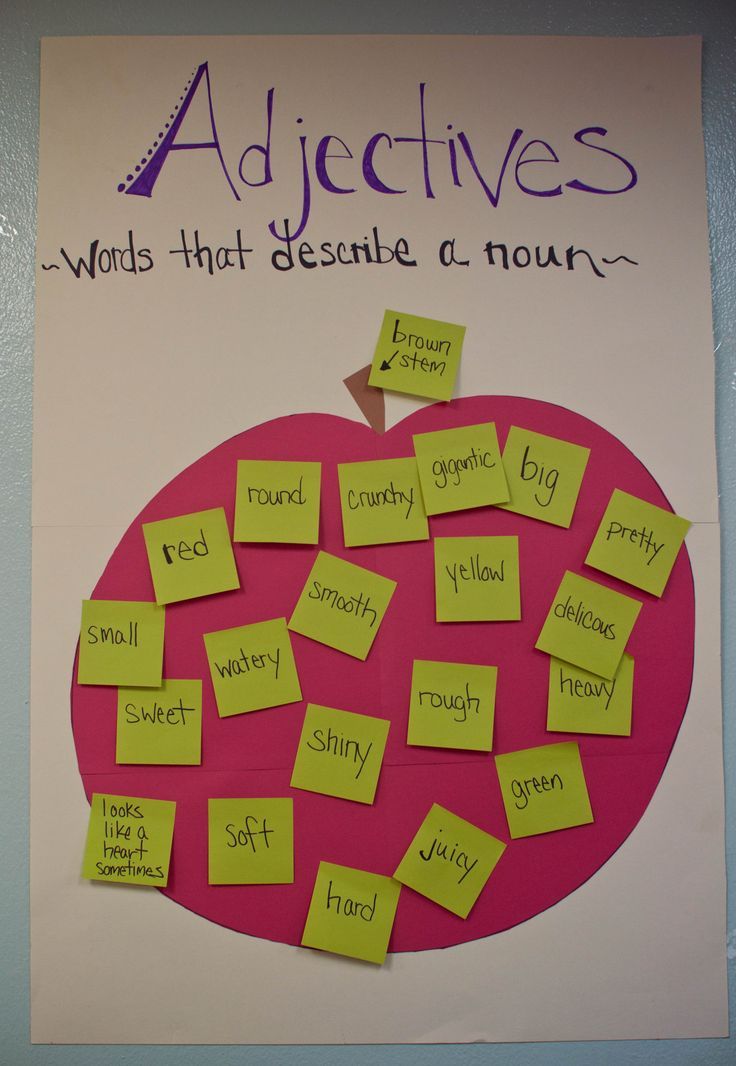 I bought a red pencil.
I bought a red pencil. 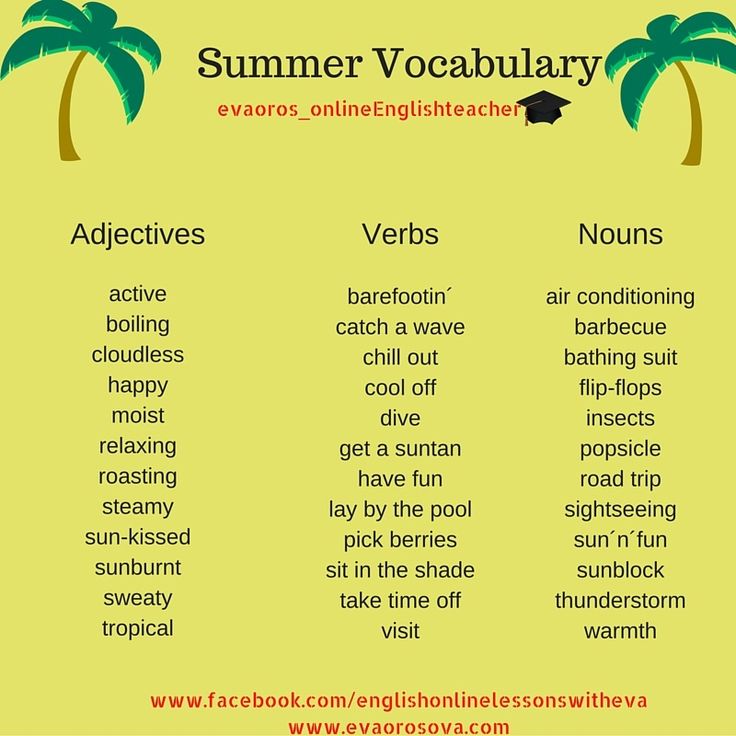
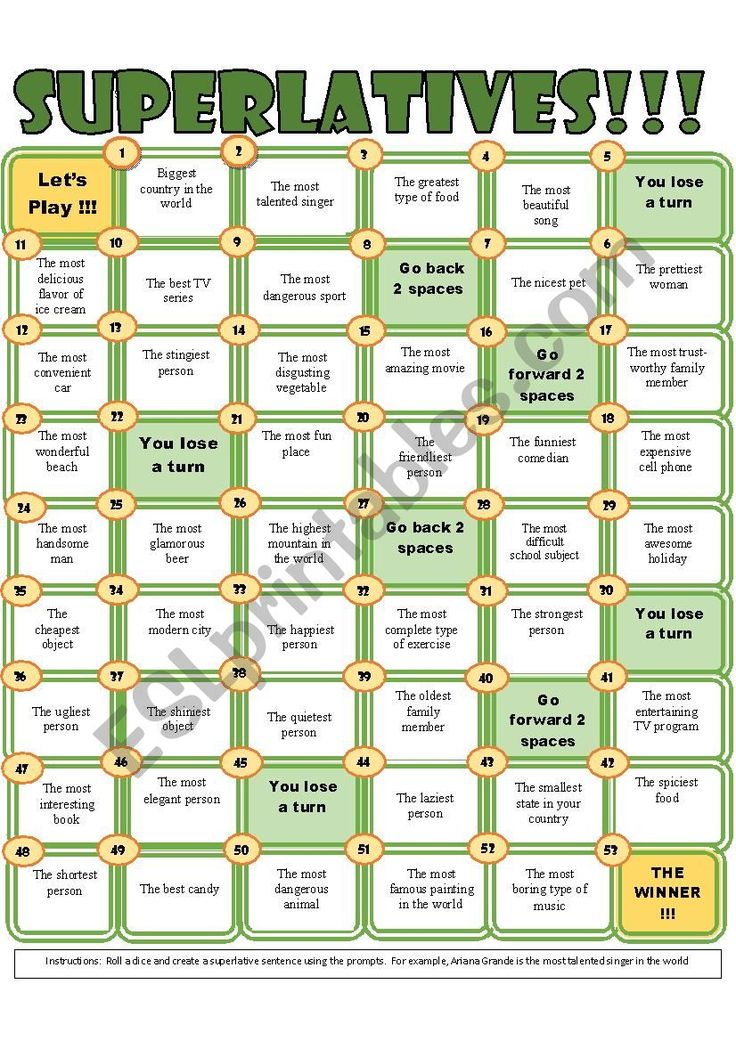 shape (shape),
shape (shape), 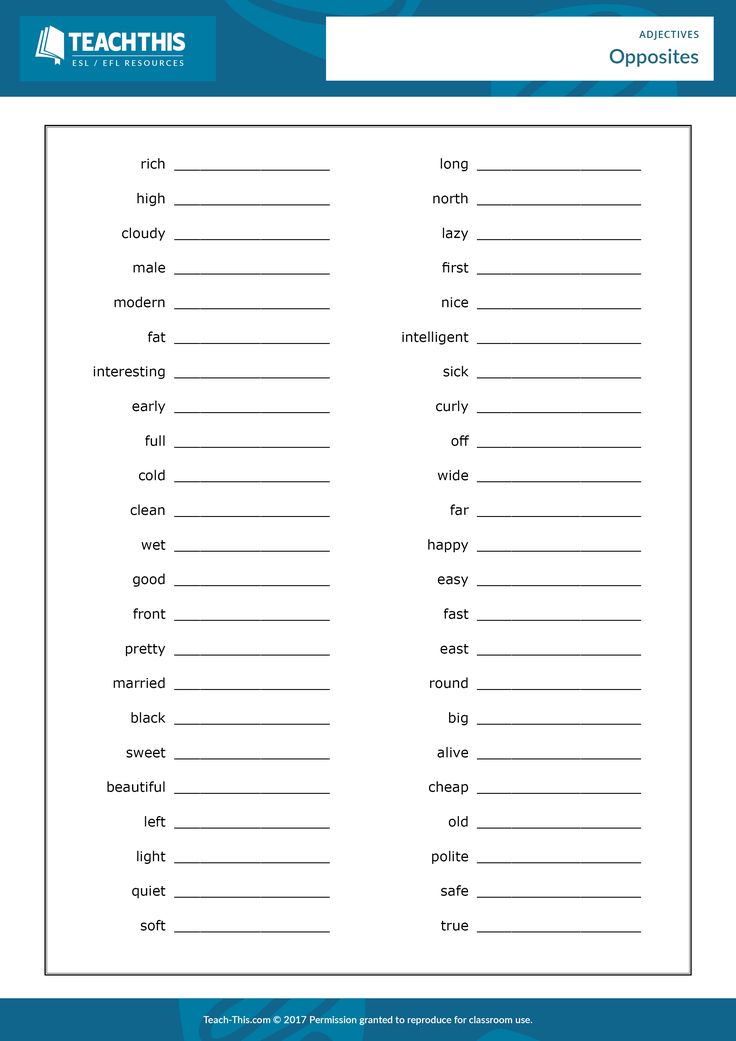
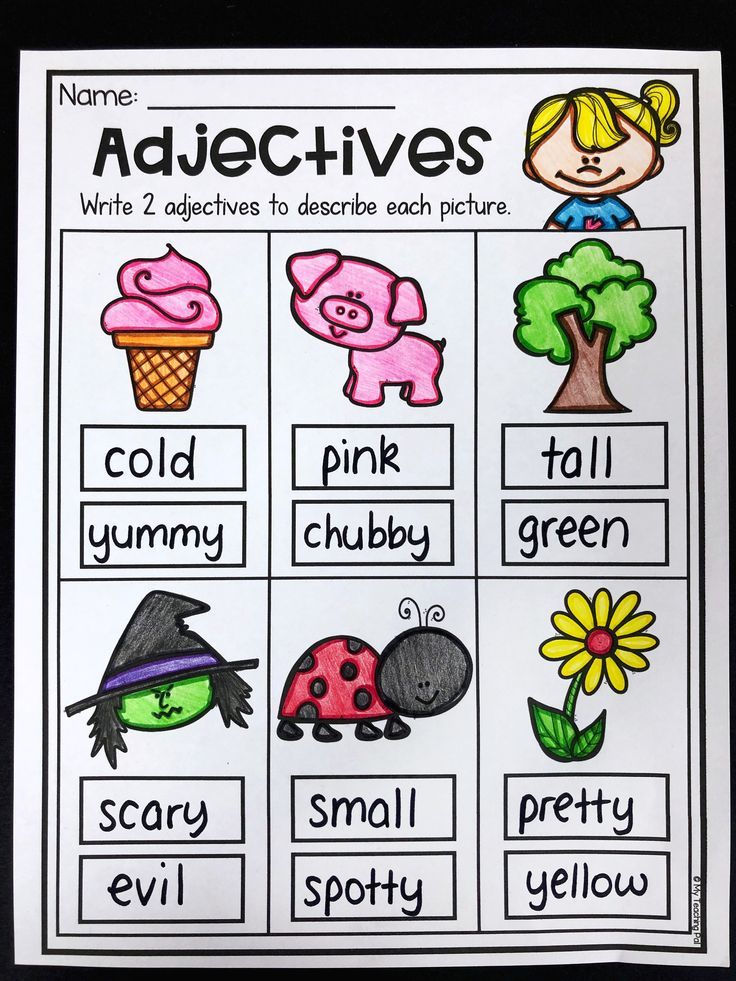 e. it is implied)
e. it is implied) 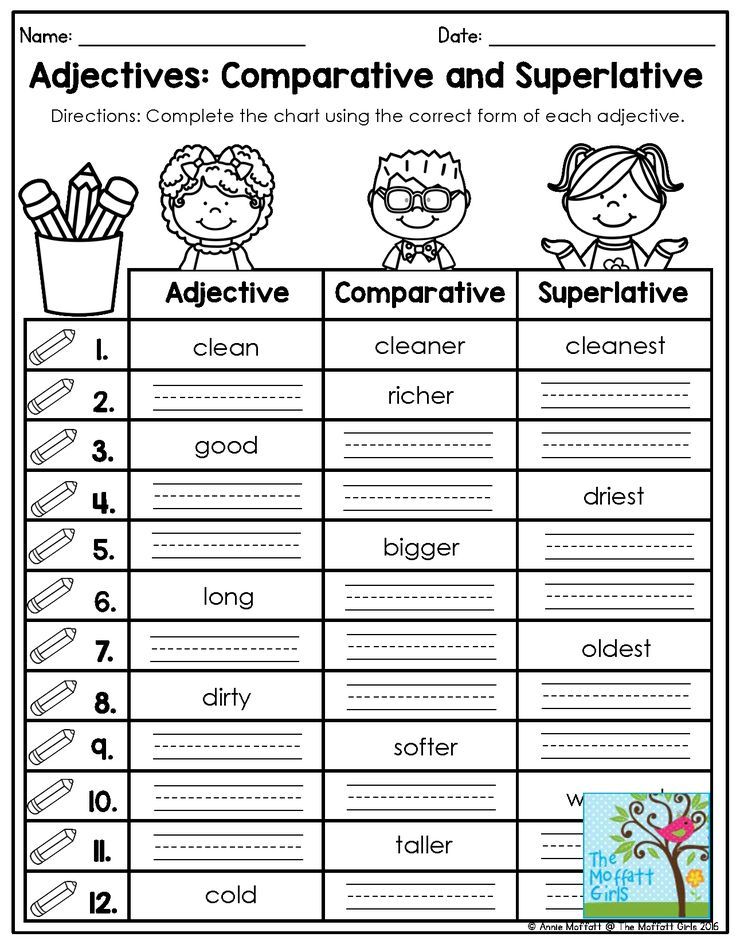 )
) 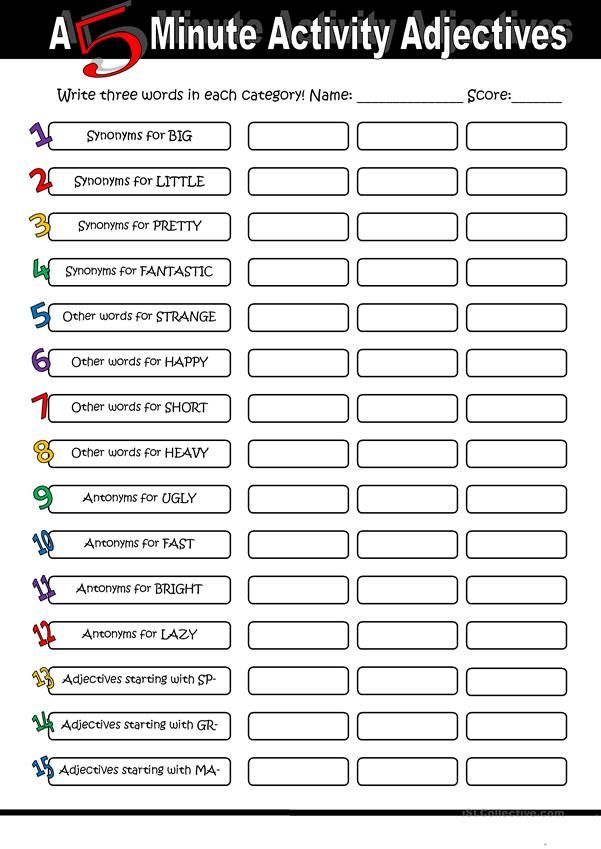 .., those ...
.., those ... 